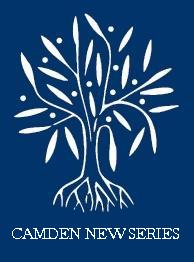No CrossRef data available.
Article contents
Chapter I. William Prynne'S Ancestors
Published online by Cambridge University Press: 01 April 1877
Extract
The family from which William Prynne descended derived both its name and origin from the county of Salop. Looking down from Wenlock Ridge on the broad and fertile expanse which spreads for many miles towards the west, the eye is attracted at the distance of a few miles by several gentle eminences, just raised above the level of the surrounding country. These grassy knolls were anciently designated “Preens.” On one of them the Lords of Castle Holgood erected, in the old times, a house of religion devoted to the Cluniac monks—a cell to the magnificent Priory at Wenlock. But all traces of this modest establishment have long since disappeared. A “Great Preen” and a “Little Preen,” the names of which may also be discovered in the records, are not now to be found on the map. “Church Preen” remains alone to fix the locality and indicate the nature of these ancient pointed hillocks.
- Type
- Biographical Fragment
- Information
- Copyright
- Copyright © Royal Historical Society 1877
References
page ii note a The word preon, prein, or preen, signified originally “a point.” Hence it was applied to a pin, and in that sense is still common in Scotland. The fibula, a brooch fastened by a pin, was designated by the same word, and its meaning was extended so as to comprehend a graving tool or other instrument terminating in a sharp point.
page ii note b Dugdale's Monast. v. 42. Tanner's Notitia Monast. Shropsh. 32.
page ii note c The priory of “Preone” is mentioned in Pope Nicholas's Taxation as possessed of two carucates of land, with a mill, a dove-cote, and other usual sources of the revenue of landed proprietors, producing altogether an annual income of €8 3s. 4d. Two cows and three pigs, which are also enumerated by the careful assessor, are valued at 6s. 9d. per annum. (Tax. Eccles. p. 164 b.)
page ii note d Rot. Hund. ii. 91.
page iii note a Harl. MS. 1559, fo. 90 ; 1566, fo. 130 ; 1043, fo. 34.
page iii note b Barrett's Bristol, p. 684.
page iii note c Ibid. p. 685.
page iv note a Harl. MS. 1559, fo. 90.
page iv note b Beauties of England and Wales, Wilts., p. 526.
page iv note c Sir George was grandson of the puritan Earl Henry, and uncle of Colonel Henry Hastings, the cavalier commemorated by Clarendon (Rebell. book vi.) Sir George died in July 1641 of the plague, and was interred in the church of St. Bartholomew-the-Great, Smithfield. The coat of arms with the seventy quarterings was suspended in his memory in that church. By his wife, Seymour Prynne, he had four sons and three daughters ; but his sons all died without issue. Bell's Huntingdon Peerage, p. 99.
page iv note d Sir Francis Seymour was brother to the Earl of Hertford, who was governor to Charles II. when Prince of Wales. At the commencement of the reign of Charles I. Sir Francis was reckoned amongst the patriots (Strafforde Papers, i. 30); but he went over to the king like his friend Strafford, and was raised to the peerage in 1640. Egerton MS. 71, is a copy of a book of Meditations and Prayers written by him, and transcribed by his daughter Frances Viscountess Downe. He died 12 July, 1664 ; his wife, Frances Prynne, died in child-birth in 1626. (Topographer and Genealogist, v. 31.)
page vi note a Dr. Dudley had been master of St. Mary's Hall, and was afterwards chancellor of the cathedral of Salisbury. (Collinson's Somersetshire, i. 153 ; Wood's Hist. Antiq. of Oxford, ed. Gutch, Coll. and Halls, p. 671 ; Fasti, ed. Gutch, ii. 26, ed. Bliss.)
page vi note b In that year Edward Webb, “farmer,” was buried on the 22nd June. (Swainswick Register, for access to which I am indebted to the kindness of the Rev.) There was a monument to Webb in Swainswick church. (Collinson's Somersetshire, i. 155.)


